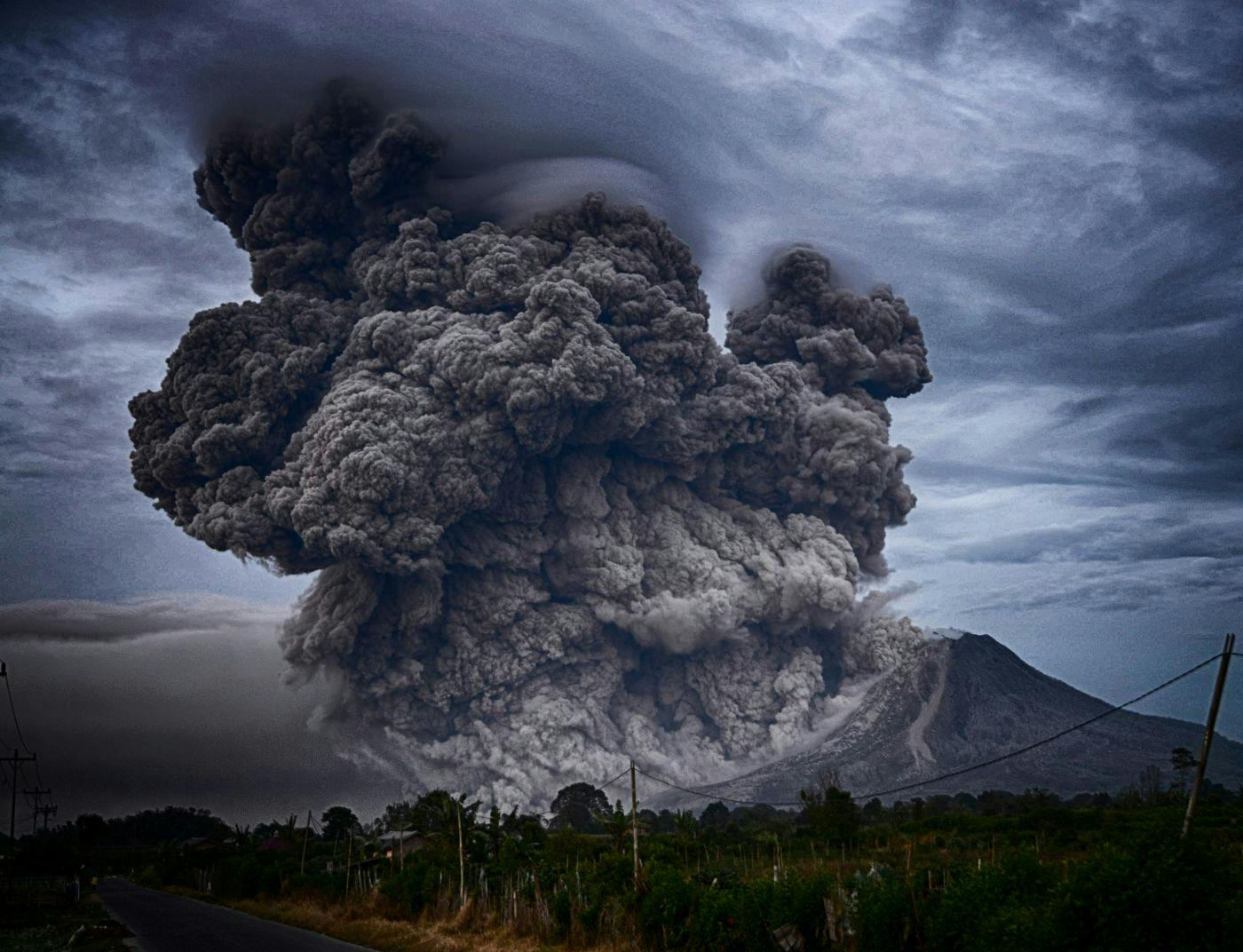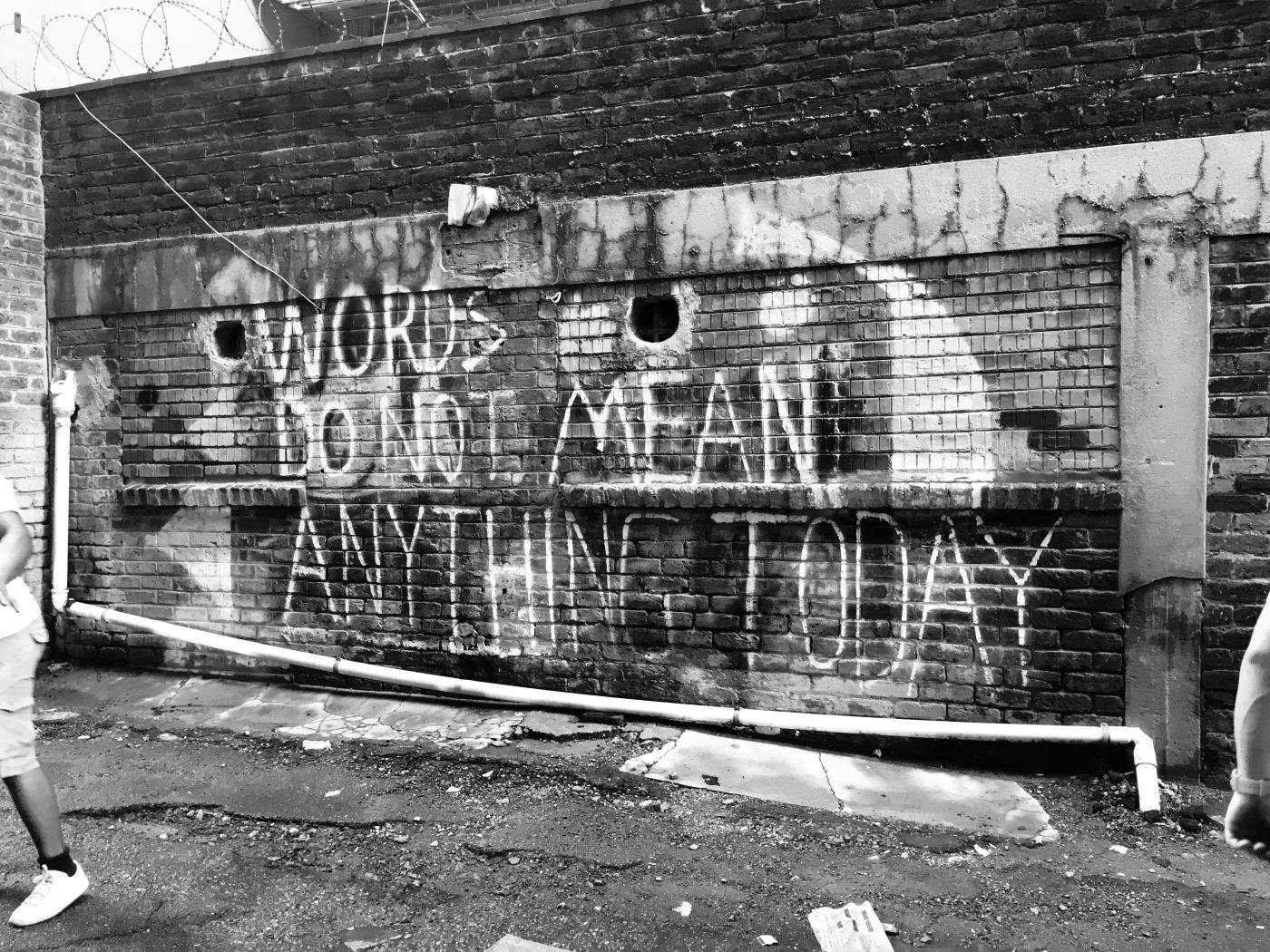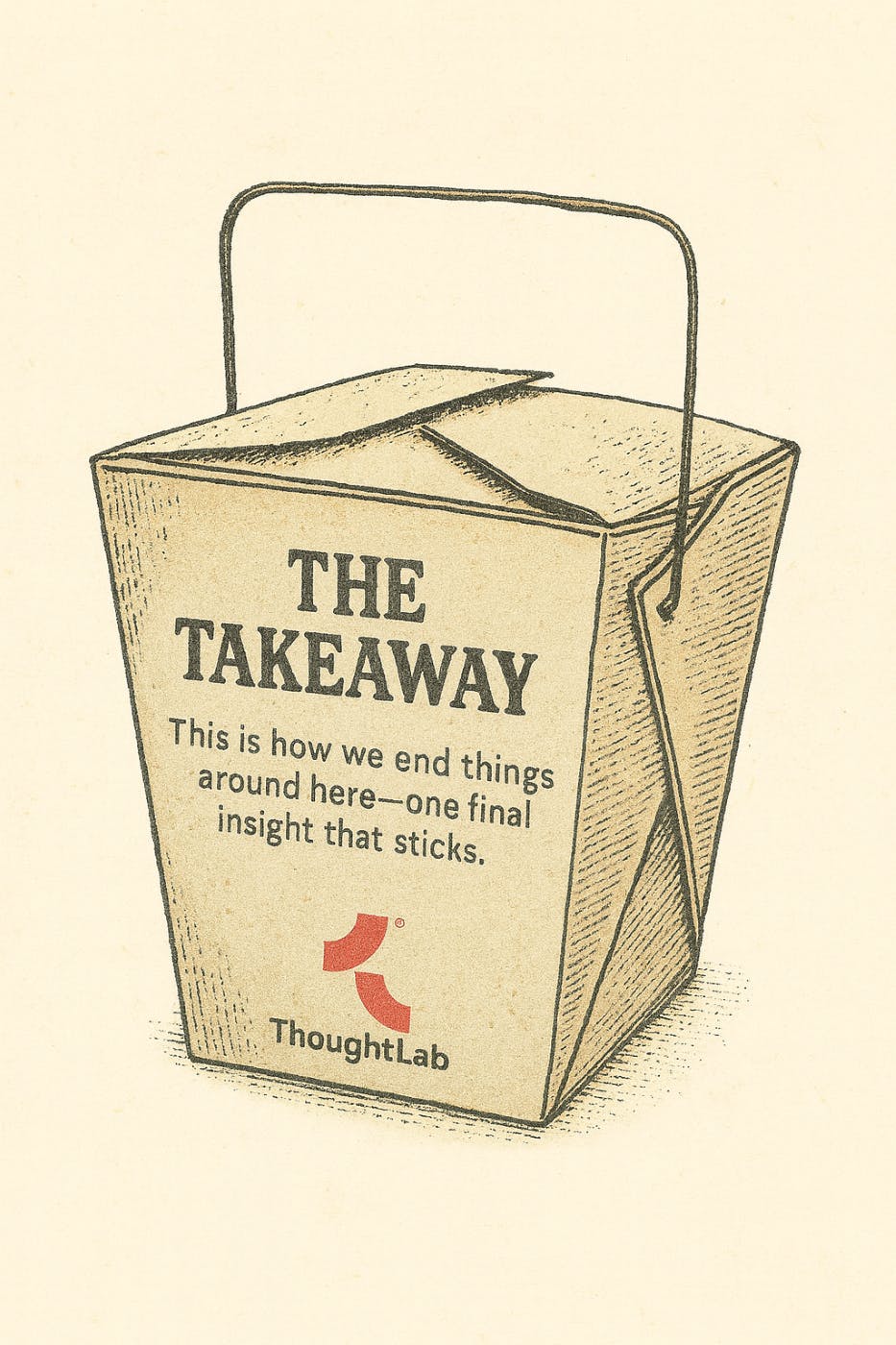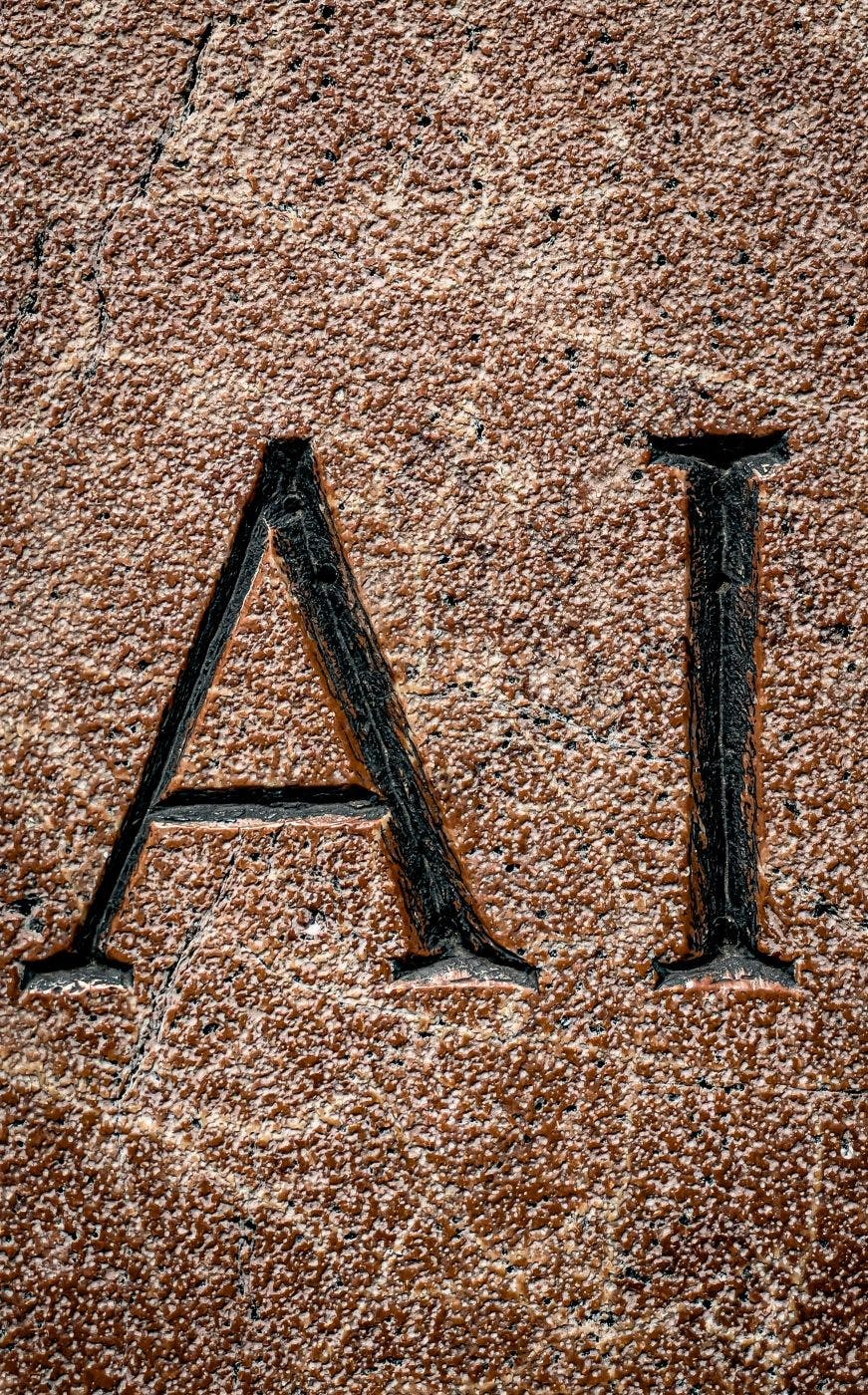

Words communicate more than meaning—they communicate tone. Are you friendly? Approachable? Professional? Clever? Sophisticated? Or, heaven forbid, careless? A single word can convey warmth, confidence, humor, or, if mishandled, confusion and even embarrassment.
A long time ago, I was the assistant front-end manager of the local grocery store in my hometown, a place called The Atlantic. It was a great place, run by a very kind father-and-son team, and they ran a clean, friendly store. Pretty much everyone in their town stopped at The Atlantic at least once a day. The prices were good, and we all had to wear white shirts, ties, and sensible shoes. We were trained to say thank you, please, and offer help in any way we could. In the four years that I worked there, we had one shoplifter—and he was caught standing at the exit because he was too ashamed to actually leave the store with what he had stolen: some cans of tuna and two loaves of bread. Sid, the father, took the man up to his office, and later they both came back down. Sid told a cashier to allow the man to shop and not worry about paying for it. Years later, I learned the guy had lost his job and his wife had left him, and he was just hungry. Sid understood and helped the guy out. It was a family market, a community place, and I liked working there.
Saturday mornings, I would come in, and my first job was to gather the twine-tied flyers with that week’s specials, detwine them, and put them in the racks at the front and the middle of the store. That particular Saturday, I cut the twine off the first pack of flyers, and there, on the front page, in bold type with color pictures, was the ad for Chock-Full-O-Nuts coffee: $1.99 per can, limit two per household. Great buy… and OH MY GOD, NOOOOOOOOO.
Before I proceed, a parental advisory: I’m about to use a word some city dwellers might find offensive. Farmers, you’ll be fine.
There on the front page of the weekly flyer was a mistake. The coffee ad announcing cheap cans of coffee for the week had fallen victim to bad copy editing. Instead of Chock-Full-O’-Nuts, what was on offer was COCK-Full-O’-Nuts. No one had proofed the flyer.
It was a rush to gather all the flyers before the store opened, call the printer, get them to fix their mistake, and get us new flyers ASAP. All was well—my boss and I stood at the front end of the store laughing at the major catastrophe we had just avoided—when it hit me: there was an ad in the local paper with the flyer in it. We grabbed the paper, and there it was, page two: Cock-Full-O’-Nuts, the heavenly coffee on sale. There was nothing to be done but call the paper and have them pull the ad for the week. Most of my job that day was acknowledging the mistake, agreeing that it was wrong, and apologizing for any discomfort. The owner, Sid, went into the storeroom, found things we had plenty of, and put them on a ridiculously cheap flash sale.
In a day, the mistake was a laugh behind closed doors, but otherwise forgotten.
That was a simple, small-town disaster—laughable behind closed doors, quickly forgotten. But what if this happened to a national chain? A global brand? Suddenly, a typo isn’t just funny—it’s a crisis. And that’s where language, branding, and mistakes collide.

Why Words Matter in Branding
If you thought the difference between “Chock-Full-O’-Nuts” and… well… “COCK-Full-O’-Nuts” was just a minor slip, think again. Words are not just placeholders on a flyer—they are the personality, the promise, and the handshake of a brand. Every time a customer reads your messaging, they’re forming a judgment. And unlike a grocery flyer in a small town, those judgments travel fast.
Words communicate more than meaning—they communicate tone. Are you friendly? Approachable? Professional? Clever? Sophisticated? Or, heaven forbid, careless? A single word can convey warmth, confidence, humor, or, if mishandled, confusion and even embarrassment. Imagine seeing a global brand make a typo on a billboard or in a tweet that everyone sees. The internet does not forgive, and memes do not sleep.
Take “Just Do It.” Three simple words. Nike didn’t invent them because they’re clever; they’re powerful because they encapsulate attitude, promise, and identity in a single, unforgettable punch. Contrast that with a misstep: a small typo in an email newsletter can make a brand look inattentive, sloppy, or worse—tone-deaf.
Language also builds trust. A consistent, carefully curated voice makes people feel confident in what they’re buying, who they’re buying from, and why. Customers don’t just buy products; they buy reassurance that the brand knows what it’s doing. And that reassurance comes through language.
And yes, humor matters. A playful turn of phrase or clever tagline can make a brand memorable. But the difference between clever and catastrophic is often a single letter. My coffee flyer is proof of that. A tiny, overlooked detail turned a perfectly good pun into an unfortunate, unforgettable moment.
In short: every word matters. Every letter matters. Words are your brand, and if your words stumble, so does your reputation.
The Anatomy of a Branding Mistake
Branding mistakes come in all shapes and sizes. Some are obvious—like turning a beloved coffee brand into a questionable pun. Others are more subtle, sneaky little gremlins that creep in unnoticed: a poorly chosen word, a misused phrase, a cultural blind spot, or even a misplaced comma. They all have the potential to derail trust and make a company look inattentive, tone-deaf, or just plain careless.
The scale of a mistake dramatically changes the stakes. In a small-town grocery store, a flyer typo might be a temporary embarrassment and a good story to tell years later. On a national or global stage, the same typo can spiral into headlines, social media storms, and hashtags you never wanted to trend. A poorly phrased tweet, an ad that misses the mark culturally, or an email that reads unintentionally sarcastic can reach millions in seconds.
Mistakes usually fall into a few categories:
- Typos and simple errors – Letters swapped, words misused, apostrophes abused. (Think “COCK-Full-O’-Nuts.”)<br />
- Tone and messaging blunders – Trying to sound clever or hip, but ending up cringy or confusing.<br />
- Cultural and contextual slip-ups – Words or phrases that mean one thing in your office but something entirely different across the globe.<br />
- Technical or procedural errors – Automation mishaps, wrong dates, broken links, misaligned campaigns.<br />
The funny thing is, the bigger the mistake, the more the world notices—and often exaggerates. Case in point: there are brands whose typos became viral sensations, complete with memes, jokes, and relentless commentary. A single misplaced word can transform a perfectly professional campaign into an unintentional comedy show.
Even massive brands can take lessons from small-town simplicity. Sid didn’t panic; he solved the problem, acknowledged the issue, and even found a way to turn it into a minor win for the store. A typo, a bad ad, or a misused word doesn’t have to define your brand—but ignoring it, mishandling it, or pretending it never happened can.
How a brand responds signals its maturity, values, and respect for its audience. And yes, it can still be funny—if handled with grace.

The Role of Proofreading, Editing, and Brand Guardianship
If there’s one thing my flyer fiasco taught me, it’s that even the simplest errors can wreak havoc if no one is watching. That’s why proofreading isn’t just an afterthought—it’s a form of brand guardianship. Every word, every comma, every apostrophe is a tiny ambassador for who you are and what you promise.
Brands don’t just speak to customers; they represent themselves, sometimes to millions at once. A single typo, awkward phrasing, or ambiguous statement can make a brand look careless, unprofessional, or worse—tone-deaf. It’s the difference between a brand being trusted or being memed.
Professional proofreading and editing aren’t about perfectionism; they’re about intentionality. Here’s why:
- Multiple layers catch multiple issues – One set of eyes can miss context; another can spot tone; yet another can catch grammar or formatting. Together, they form a safety net.<br />
- Automation isn’t foolproof – Spellcheck can’t catch every nuance, cultural reference, or accidental pun. (Case in point: our coffee flyer.)<br />
- Design and copy must work together – Words can be misread or misinterpreted if the layout misleads. Someone needs to be the guardian of the whole message.<br />
- Legal and regulatory checks matter – Especially for global brands, missteps can carry consequences far beyond embarrassment.<br />
Guardianship goes beyond just catching mistakes; it’s about protecting the brand voice. Every piece of communication should feel like it’s from the same entity, speaking with the same personality, no matter the medium. That consistency builds trust.
And yes—proofreading can be surprisingly fun if you think of it like detective work. Spotting a missing apostrophe or a rogue letter feels like saving the brand from tiny disasters before they become big ones. It’s a quiet, unglamorous, but absolutely crucial part of making sure the story your brand tells matches the story you want to tell.
Learning to Embrace Imperfection (Without Losing Professionalism)
Here’s the truth: no matter how many proofreaders you have, how polished your brand guidelines are, or how many layers of approval exist, mistakes will happen. It’s human nature—and language is tricky. Even the most meticulous teams occasionally produce a “COCK-Full-O’-Nuts” moment.
The real skill isn’t avoiding every slip; it’s knowing how to respond when one happens. Embracing imperfection doesn’t mean celebrating sloppiness; it means acknowledging human error, acting quickly, and maintaining your brand’s integrity. It’s about turning a potential embarrassment into a moment of authenticity.
Some brands do this brilliantly. A misstep handled with honesty, humility, and even a touch of humor can create goodwill. It reminds customers that there are real people behind the logo, people who are fallible—but also capable of making it right. Conversely, pretending mistakes never happened, deflecting responsibility, or burying issues tends to erode trust and make a blunder feel far larger than it is.
There’s also a creative opportunity in imperfection. Some campaigns have leaned into mistakes or playful miscommunications to humanize their brand. Memes, clever acknowledgments, and self-aware social posts can turn a slip into a story people remember—and even share. It’s a delicate balance: you want to be relatable, not ridiculous.
The Atlantic taught me that a small-town approach can scale up conceptually. Fix it quickly, acknowledge it openly, and if it brings a laugh along the way, that’s just gravy. Your brand doesn’t have to be perfect—it has to be reliable, accountable, and recognizable. That consistency, paired with the humility to own mistakes, is what builds long-term loyalty.

Language as a Strategic Tool for Brand Differentiation
If mistakes show the power of words in the negative, the right words can be even more powerful in the positive. Language isn’t just a vehicle for information—it defines a brand. The tone you choose, the rhythm of your sentences, and the personality behind your phrasing all create an identity that sets you apart.
Think about it: a tagline like “Think Different” or “Because You’re Worth It” does more than explain a product—it encapsulates an attitude, a promise, and a philosophy. Words become shorthand for a brand’s values and personality. Every email, ad, flyer, or social post is a chance to reinforce who you are—or confuse your audience entirely.
Strategic language does three things:
- Creates memorability – Clever, concise language sticks in the mind. Customers remember a witty line or a distinctive phrasing long after they’ve forgotten the price.<br />
- Builds trust and authority – Consistent, clear communication signals competence. People trust brands that speak confidently and clearly.<br />
- Differentiates your brand from competitors – In a crowded market, tone and voice are often what makes one brand feel unique while another fades into the noise.<br />
Here’s a little secret: humor, playfulness, or even a well-timed pun can be powerful tools—but only if you understand your audience and your voice. The COCK-Full-O’-Nuts flyer proves that timing and context are everything. Misused, humor backfires; used wisely, it humanizes the brand and makes it unforgettable.
Language also ties directly into category creation—the idea of staking a claim in the market not just with products, but with the way you speak about them. How you describe what you do, the words you repeat, the phrases you trademark in the minds of your audience—these are all part of a brand’s ecosystem. Words can elevate a product from “just another option” to a defining choice that belongs only to you.
In short, the same power that makes mistakes disastrous can make your brand iconic. Words shape perception, create loyalty, and, if you play them right, can leave a lasting impression that no product alone could achieve.

The Takeaway
So, what have we learned from a grocery store flyer gone horribly wrong? First, that words are powerful. They carry tone, personality, and authority. They can build trust—or destroy it. A single misplaced apostrophe, a missing letter, or a poorly chosen phrase can turn a perfectly fine message into a crisis—or a viral meme.
Second, mistakes happen. Even the most careful brands with the best intentions will slip up. What separates a minor hiccup from a full-blown catastrophe is how you respond. Quick acknowledgment, decisive correction, and a touch of humor when appropriate can turn a potential disaster into a humanizing moment. Sid at The Atlantic didn’t just fix the flyers; he found a way to keep things moving, reassure customers, and even boost sales. That’s brand agility at its finest.
Third, language is not just a tool for error prevention—it’s a strategic weapon for differentiation. The words you choose, the tone you adopt, and the personality you project are what make a brand memorable, trusted, and distinct. At ThoughtLab, we see this as central to building brand ecosystems: language is how you stake your claim in a market, define your category, and make your brand unforgettable. It’s not just what you sell, it’s how you say it—and how that language resonates across your entire brand ecosystem.
Finally, embracing imperfection without losing professionalism is key. Mistakes will happen, but they don’t have to define you. How you respond, how you protect your brand voice, and how you leverage language strategically—that’s what leaves a lasting impression.
Whether you’re running a small-town grocery store or creating a global brand, pay attention to your words. Proof them. Guard them. Choose them deliberately. Because a brand’s story is told in its language, and every letter matters. And if you ever see a flyer that reads COCK-Full-O’-Nuts… well, just know that even disasters can teach us something about strategy, agility, and the power of words.
